Graphics Reference
In-Depth Information
F*
H
1
H
2
e
e
'
F
I
1
I
2
Figure 5.13.
Prior to rectification, epipolar lines are slanted, which complicates computing dense
correspondence. After rectification by appropriate projective transformations, epipolar lines
coincide with matching image rows (scanlines), making the correspondence search easier.
once at the beginning of the process, when the rectifying projective transformations
are applied, easing the search for dense correspondence.
Figure
5.13
illustrates the idea of rectification. In a rectified image pair, the epipolar
lines are parallel; thus, the epipoles are said to be “at infinity,” represented by the
homogeneous coordinate
]
infinitely far away on the
x
axis. The fundamental matrix for a rectified image pair is
given by
[
1, 0, 0
]
, which informally corresponds to the “point”
[∞
,0
000
001
0
F
∗
=
(5.41)
−
10
Plugging
F
∗
into Equation (
5.34
) gives the simple constraint that for a correspon-
dence in the rectified pair of images,
y
=
y
, corresponding to our definition of
rectification.
There aremany choices for selecting a pair of rectifying projective transformations
by an arbitrary amount will still produce rectified images. The main consideration is
that the rectified images should not be too distorted.
Here, we describe the rectificationmethod proposed byHartley [
187
], which uses a
set of feature matches
(
H
1
,
H
2
)
x
1
,
y
1
)
x
n
,
y
n
)
}∈
I
2
. The idea
is to estimate a projective transformation
H
2
for the second image that moves the
epipole to the homogeneous coordinate
{
(
x
1
,
y
1
)
,
...
,
(
x
n
,
y
n
)
}∈
I
1
and
{
(
,
...
,
(
while resembling a rigid transfor-
mationasmuch as possible. Thenamatching rectifying transformation is determined
for the first image that minimizes the distance between the matches in the rectified
images. In more detail, we apply the following algorithm:
[
1, 0, 0
]
1. Estimate the fundamental matrix
F
from the feature matches using the
algorithm in the previous section.
2. Factor
F
in the form
F
e
]
×
M
, where
e
=[
x
e
,
y
e
,1
]
=[
is the homogeneous
coordinate of the epipole in the second image.
3. Choose a location
x
0
,
y
0
)
in the second image— for example, the center of the
image—and determine a 3
(
×
3 homogeneous translationmatrix
T
that moves
x
0
,
y
0
)
to the origin.
4. Determine a 3
(
3 homogeneous rotationmatrix
R
thatmoves the epipole onto
the
x
-axis; let its new location be
×
x
∗
,0
(
)
.
15
In fact, there are seven degrees of freedom in the sixteen parameters of
H
1
and
H
2
.


















